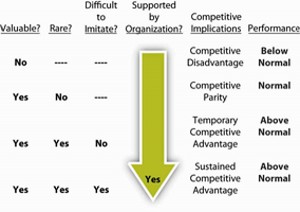Having owned two large pharmacies in the past, after 7 years implementing other property businesses in the healthcare space, circumstance provided me with the opportunity to commercialise a new pharmacy in a green-fields site in eastern Melbourne.
Much continues to be written about the future for Pharmacy.
What is our future role?
How do we create new revenue streams from service gaps that exist in the current healthcare space?
Services such as vaccinations, health screening and other specific disease state services are all possible options.
In addition to this evolving mix of new services is the option of implementing pharmacies without a section 90 PBS number and to forgo the baseline revenue and customer traffic that this agency provides.
Given that I personally believe the PBS is now a strategy of diminishing return for pharmacy operators, I was attracted by the proposition of investigating new service models outside of this traditional.
So my question is – what characteristics does a potentially successful new business model for ‘pharmacy’ look like?
Given the risks, challenges and potential opportunities, I decided to step back and take a critical, non-pharmacists view of the typical pharmacy commercial model.
Having completed a Masters of Innovation (MEI) at Swinburne University some time back, I reflected on a lecture series which delved into The Service Continuum; a virtual edict to which all businesses, whether you are selling airline seats, fresh fruit and vegetables or Vitamin C, must heed and understand (see diagram below):
The Service Continuum
At one end of the service continuum, is the ‘Value Network’ which is most recognizably represented by large corporate networks and franchise structures. Typically the value network has structural elements such as:
- Transactional business – the business completes many individual Tx’s (hundreds) on a daily basis;
- Highly compliant – participants have rigid management processes and deep operational structures;
- Very strong propositions and brands – the brand and the product creates the value and this is linked very strongly to compliance;
- The customer interaction is often just minutes – a point in time, here and now;
- These business types are order takers – they open the door and take the order.
Value Networks are a paradigm of mass (lowest cost), momentum (size), compliance and efficiency driven by the proposition of the reseller and the brand. Supermarkets, retail chains, franchises and petrol stations are the classic examples, along with an eager cohort of retail pharmacy owners it would seem.
Value Networks are often very mature or aggregated industries competing with the same product brands (e.g Pepsi) or the same commodity (e.g petrol or grocery). As an option to competing on price (as the norm) where dynamics of mass come into play, they will attempt to create credibility with their brand and try to impart ‘duty of care’ or ‘value shop’ traits in their network offer. Classic recent examples include Coles supermarkets aligning with MasterChef, Safeway aligning with Jamie Oliver – all attempts to create a relationship with the re-seller outside that of price, and to make that transactional relationship last longer.
At the other end on the continuum is the ‘Value Shop’ where specialized providers (the people and their knowledge) create the value. In stark contrast to the value network, the structural elements of the value shop include:
- Relationship (not transactional) driven paradigm with much fewer transactions daily and customer relationships which can last for many years;
- Fee for service centric – you don’t pay for a product or brand here, you pay for how much value the person creates;
- Recall systems are common to maintain the relationship and revenue streams;
- They are order givers – that’s the value creation – the expert is the brand and the value;
- Non-compliant – participants vary in their expertise, systems and proposition and do it their way. Everyone is the Managing Director !
Examples of value shops include specialist mechanics, accountants, fee-for-service healthcare providers, hair-dressers and so on. There are also network examples of value shops with examples such as DentalCorp in dentistry (now owned by BUPA), OPSM in optometry, H&R Block in accounting and so on. However, in each case that a value shop business is managed as a network, the innovation, adhocracy and nimbleness of the small provider makes way for the processes, bureaucracy and compliance of the network. You can’t have it both ways and many value shop networks fail for this reason, that is, they lose their ability to adapt and evolve.
Done well, value shop businesses can succeed against similar offers from value networks if their service model is adaptable and their offer provides value based on individual needs. Examples include a fine-food Deli or gourmet Butcher located opposite a Safeway with its own in-store Deli or butcher. Differentiated and high-quality product, an engaging shopping experience and tailoring of offer to individual clients, are cornerstones for success. The same service can be dearer as long as the ‘value’ is there in the consumers mind. Compete with exactly the same product (commodity) or brand and volume dynamics are the order of the day. The strategy of supermarket home brands is therefore clear.
Looking back at pharmacy then, and it’s clear that traditional retail pharmacy model finds itself in no-mans land on the service continuum. With the signing of the PBS in 1948, we moved from a space where pharmacists created all the value into a space where the manufacturers and brands create all the value. Given that all pharmacists compete with the same product and brand mix, the industry is further positioned into a space where mass, momentum and compliance will always win in a channel not known for its compliance. Importantly, pharmacy has yet to achieve in a sustained manner the conversion of time into money like other value shop businesses. In pharmacy, Chemist Warehouses has firmly headed to the left of the continuum with its mass, momentum and compliance. The right of the continuum is currently vacant as no pharmacy chain has been able or had the appetite, to prove that it can truly provide a better outcome.
The Service Continuum above also dovetails beautifully into theory related to competitive advantage.
There are many models for competitive advantage, but the one I like is from Jay Barney (Strategic Management and Competitive Advantage: Concepts. New Jersey) and it’s called the VRIO model and was first published in 2005. VRIO is an acronym for Value, Rarity, Imitation and Organisation with the elements explained by Jay Barney as follows:

Value: Is the service or product of the business of value and is the business able to exploit the opportunity or neutralize threats with its resources and capabilities?new
Rarity: Is control of the resource or capability to exploit the opportunity, in the hands of a relative few?
Imitation: Is the opportunity difficult to imitate, and will there be significant cost disadvantage to a firm trying to obtain, develop, or duplicate the resource/capability?
Organization: Is the firm organized and ready and able to exploit its resource/capabilities or does it have particular commercial linkages with make this so?
Understanding competitive advantage assists new businesses position themselves correctly. Is your new business about scale and brand recognition or it is about personalization, adaptability and advice? If your mind is made up, can you finance and execute your desired business effectively and take on your competitors if they decide to take you on? What alliances or partnership can you strike to provide you with momentum or to assist you overcome barriers to entry?
In Summary
Given the opportunity to start with a clean slate, a blank sheet of paper and be unencumbered with tradition, it would be reasonable to summarise that a new service model for pharmacy into the future should:
- NEVER take the low ground in terms of mass and momentum unless you can afford to take on all comers;
- It’s better to take the high ground and convey a core proposition and message to potential customers in everything you do, everyday;
- Work with a targeted cohort of customers and provide services or products that provide a superior outcome and that are uncommon in the marketplace;
- The pharmacist, what he does and the value that he brings must be the brand and this must enable the conversion of time into money by its very definition.
Stay tuned for article 2 – “The Value Curve Aligns”


